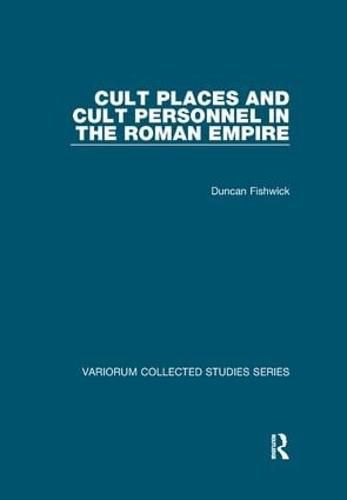Readings Newsletter
Become a Readings Member to make your shopping experience even easier.
Sign in or sign up for free!
You’re not far away from qualifying for FREE standard shipping within Australia
You’ve qualified for FREE standard shipping within Australia
The cart is loading…






The twenty-one studies assembled in this volume focus on the apparatus and practitioners of religions in the western Roman empire, the enclaves, temples, altars and monuments that served the cults of a wide range of divinities through the medium of priests and worshippers. Discussion focuses on the analysis or reconstruction of the centres at which devotees gathered and draws on the full range of available evidence. While literary authorities remain of primary concern, these are for the most part overshadowed by other categories of evidence, in particular archaeology, epigraphy, numismatics and iconography, sources in some cases confirmed by the latest geophysical techniques - electrical resistivity tomography or ground-probing radar. The material is conveniently presented by geographical area, using modern rather than Latin terminology: Rome, Italy, Britain, Gaul, Spain, Hungary, along with a broader section that covers the empire in general. The titles of the various articles speak for themselves but readers may find the preface of interest in so far as it sets out my ideas on the use of ancient evidence and the pitfalls of some of the approaches favoured by modern scholars. Together with the wide range of individual papers the preface makes the book of interest to all students of the Roman empire as well as those specifically concerned with the history of religions.
$9.00 standard shipping within Australia
FREE standard shipping within Australia for orders over $100.00
Express & International shipping calculated at checkout
The twenty-one studies assembled in this volume focus on the apparatus and practitioners of religions in the western Roman empire, the enclaves, temples, altars and monuments that served the cults of a wide range of divinities through the medium of priests and worshippers. Discussion focuses on the analysis or reconstruction of the centres at which devotees gathered and draws on the full range of available evidence. While literary authorities remain of primary concern, these are for the most part overshadowed by other categories of evidence, in particular archaeology, epigraphy, numismatics and iconography, sources in some cases confirmed by the latest geophysical techniques - electrical resistivity tomography or ground-probing radar. The material is conveniently presented by geographical area, using modern rather than Latin terminology: Rome, Italy, Britain, Gaul, Spain, Hungary, along with a broader section that covers the empire in general. The titles of the various articles speak for themselves but readers may find the preface of interest in so far as it sets out my ideas on the use of ancient evidence and the pitfalls of some of the approaches favoured by modern scholars. Together with the wide range of individual papers the preface makes the book of interest to all students of the Roman empire as well as those specifically concerned with the history of religions.